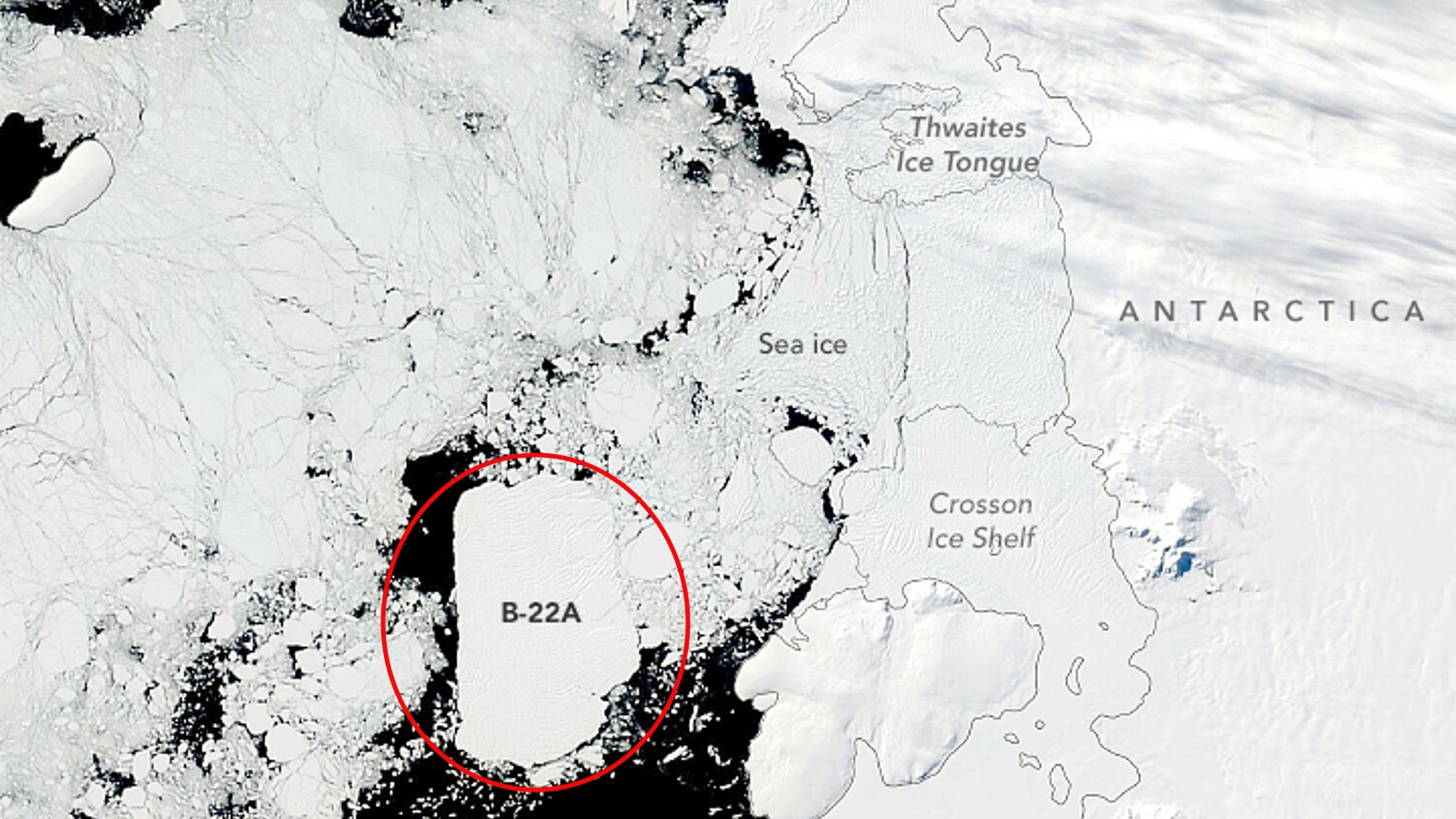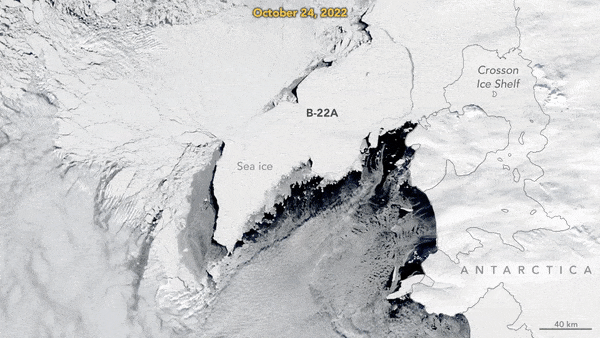
An enormous iceberg that first broke off Antarctica's "Doomsday Glacier" more than 20 years ago is finally waving goodbye to the icy continent after being freed from the seafloor, which had trapped the ice chunk in place for over a decade.
The long-lived berg, known as B-22A, is the largest remaining piece of B-22, a colossal icy mass the size of Rhode Island that snapped off Thwaites Glacier — also known as the Doomsday Glacier — in March 2002. During this time, B-22A has retained a lot of its original ice and covers around 1,160 square miles (3,000 square kilometers), which is around twice the size of Houston, Texas.
After breaking free from the glacier in the early aughts, B-22A floated freely just off the Antarctic coast until it got caught on a raised section of the seafloor in 2012. The berg became stuck around 32 miles (53 kilometers) from where it was birthed, meaning it averaged a pitiful 1.6 miles (2.6 km) of movement per year, which is one of the slowest average crawls of any iceberg on record, according to NASA.
But now, the aging iceberg has been set free and is making up for lost time. Satellite photos from NASA's Terra and Aqua satellites revealed that the berg began to move again on Oct. 24, 2022, according to NASA's Earth Observatory. As of March 26, B-22A has drifted around 110 miles (175 km) to the northwest, meaning it has traveled more than three times as far in six months than it managed in the previous 247 months.
Related: Massive iceberg narrowly avoided collision with Antarctic ice shelf

Once a large iceberg calves from an ice sheet or glacier, it normally takes only a few years to journey away from polar regions and into warmer waters, where it will eventually break apart. It's rare for the floating ice chunks to stay intact for more than a decade, but it is not unheard of. In March 2013, a massive iceberg named B-15T was spotted 13 years after breaking off from Antarctica, by which time it had circled half the continent.
Scientists are particularly concerned about B-22A venturing away from Antarctica because it may impact the stability of the Thwaites Glacier.
Stationary icebergs can cool the surrounding waters, which can have a stabilizing effect on glaciers and other ice masses but also harm marine ecosystems if they get stuck further afield, according to the Earth Observatory. In spring 2020, alarms were raised when the world's formerly largest iceberg, A68, became set on a collision course with South Georgia, an island in the Southern Atlantic Ocean. Experts feared that the mighty berg would become trapped on the surrounding seafloor, like B-22A, and that its cooling effect would drastically impact the ecosystem there. (A68 eventually broke apart after narrowly missing South Georgia.)
Despite melting slower than originally thought, the Doomsday Glacier remains in a precarious situation, and recent research has shown that its melt rate could rapidly accelerate in the future. Therefore, it is important that researchers monitor any changes that may be triggered by an iceberg's departure.
Scientists will also track B-22A as it moves away from Antarctica to see where and when it will break apart. Icebergs can dump a lot of fresh water as they melt, which can impact ecosystems and ocean currents as they slowly die: A68 dumped more than 1 trillion tons [907 billion metric tons] of water into the ocean over a period of three years.
B-22A is not the only major Antarctic iceberg to embark on a journey recently. In early March, researchers from the British Antarctic Survey took the first aerial photographs of A81, an iceberg the size of Los Angeles that broke off from the Brunt Ice Shelf on Jan. 22 after an enormous chasm finally snapped the ice sheet in half. And in October 2022, satellites spotted the world's largest iceberg, A-76A, as it entered the Drake Passage and began drifting toward the equator.







